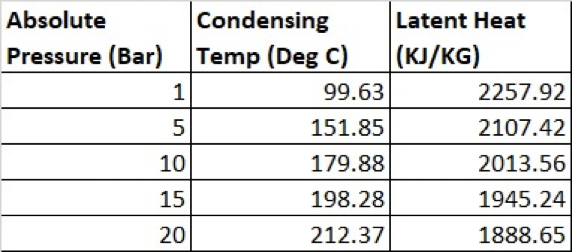The Background: Energy efficiency retrofits offer many opportunities to improve boiler operations and steam usage and thus result in minimizing overall energy cost and GHG emissions. Such opportunities are in all 5 domains: type of fuel used, thermal efficiency of steam generation, electricity consumption in boiler operations, the manner in which steam is supplied and used in the plant and substituting boiler operations. This series of Technology at Work will share the case studies in all these four domains. This article elaborates on an energy efficiency retrofit technology, the fourth in the list: the manner in which steam is supplied and used in the plant. These articles are written in such a way that all the stakeholders can understand the benefits of technology, appreciate the challenges and adopt it.
Steam is used for various heating applications by utilizing its latent heat. As the temperature requirements are different steam pressure requirement also correspondingly varies. However, the boiler will generate steam at one pressure and as per the highest-pressure requirement and then PRS is used to reduce the pressure for the corresponding temperature requirement as one cannot have so many boilers for different pressure requirements. The following data from Steam Table gives an idea of this phenomenon.

The Loss & Energy Saving Opportunity: Now when steam expands in a PRS it doesn’t perform any useful work. Steam gets superheated after the expansion however despite this superheating, condensation from the steam traps clearly indicates heat losses in the steam line. Here in the case of PRS, if the steam expands in a back pressure turbine, it does the useful work and corresponding electrical power is generated in the turbo-generator.
The Case Study: In this process plant, boiler design parameters are 15TPH, 21 kg/cm2, 230°C while the operating range is 12 to 14 TPH mostly (6 to 10 TPH for 8 hours for 3 to 4 months), Operating Pressure 15 to 19 kg/cm2 & operating temperature is 200 to 212° C. Steam usage is at 3.5 kg/cm2, 8 Kg/cm2 & 14 kg/cm2. High-pressure line goes separately to the plant while the low-pressure line goes through a PRS with 10 kg/cm2 for 8 Kg/cm2 application and then further reduced to 4.5 Kg/cm2 for the 3.5 Kg/cm2 requirement. It is to be noted that the steam quantity required is higher at lower pressure but as one of the requirements (though low flow rate and also for lesser time), the steam is generated for the highest-pressure requirement.
This PRS was bypassed by a back pressure turbine (steam expansion from 20 to 10 bar) of 175 KW capacity (@11 TPH: 185 KW, @4 TPH: 40 KW). This turbine will be generating 1.26 million units of electricity per year and saving about 10.71 million Indian Rupees and saving 1134 MT of GHG emission with an overall payback period of 14 months.

Key Challenges & Important Points in Adopting this Technology:
There are many challenges, most important ones are – should one go with a multistage turbine or a single-stage turbine? Single or multiple turbines? What should be the operating range for the turbine, i.e. steam flow rate from – to? How well past data is studied & the future requirement of steam consumption evaluated? What are the fuel & electricity prices? Which technology is to be adopted? What RPM of the steam turbine is to be selected? There are many other aspects as well which are case-specific. While the investment opportunity is very good but all these aspects must be critically examined to ensure the success of the project before the selection of the turbine and implementation of such projects.
Author
Milind Chittawar, CEO
SEE-Tech Solutions Pvt. Ltd.

